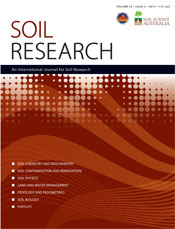SR13369Soil organic carbon fractions under conventional and no-till management in a long-term study in southern Spain
This study compares the viability of no-till farming (NT) with conventional (traditional) tillage (TT) for improving SOC levels. The results indicate that the NT method is particularly beneficial for improving the quality of agricultural soil. The lower spatial and temporal variability of SOC content, including labile and recalcitrant C forms, observed in TT soil indicates a homogenisation of the soil profile and a more modified structure than in NT soil. The NT system improved the levels of the different fractions of C in the surface soil and reduced the amount of CO2 released into the atmosphere.




